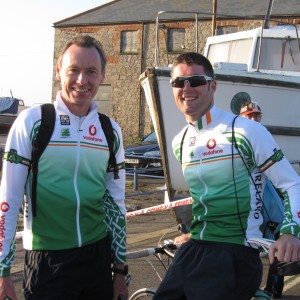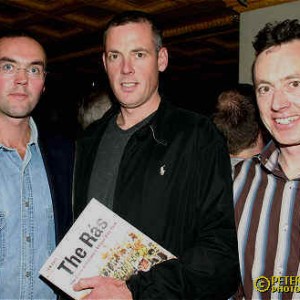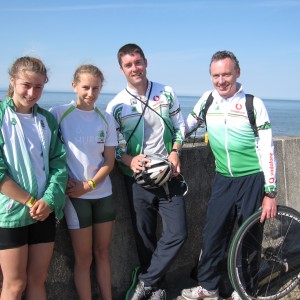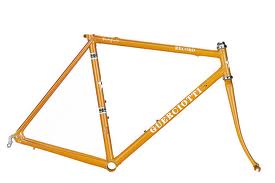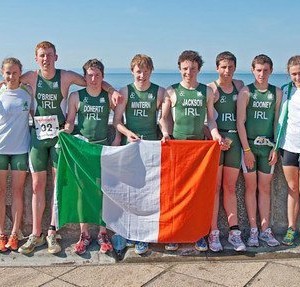Triathlon and Cycling Coach Stephen Delaney of Triathlon Ireland Hp Junior squad
Stephen is a former Cycling International and Winner of the 1984 Ras .
Which gear should I be in?
It is the question I am asked more than any other and needless to say there is no easy answer, as the saying goes we are all individuals, and although I don’t profess to have all the answers I can’t hide away from having an opinion, so for what its worth here is that opinion. Apologies in advance if this gets too technical or too basic. First a quick history lesson.
If you were only allowed one gear on your bike what would it be? A high gear for going faster on the flat or maybe a lower gear to get up hills easier. This was a very real question for the cycling pioneers. When you bought a penny farthing bike there was no going back to change the sprockets. The cranks were bolted to a very large wheel, pedals to the cranks and that was it. One revolution of the pedals equals one revolution of the wheel. The bigger the wheel the further it travelled for each revolution, a higher gear.
Even though builders use ever more exotic materials to make their bikes their basic shape has not changed since 1885 when the first “safety bicycles” were built. These bikes like our own had a sprocket, or chainring, attached to the frame and a sprocket attached to the back wheel linked by a chain. This was a huge advance as by changing the size of the sprockets we could change the gearing, if the chainring is twice the size, has twice as many teeth, of the sprocket on the wheel for each rev of the chainring the wheel turns twice. Since the mid 1930’s we have had reliable multi gear bikes changing how far the wheel travels for each complete turn of the pedals. No longer was the gear you used dictated by road conditions and hills but by how fast you wanted to turn the pedals, your cadence.
So the real question is how fast do you want to turn the pedals, how high or low is your preferred rpm ( revs per minute) ? You want to go as fast as you can and you want to do it in the most fuel efficient way possible, but you want to be able to run, or at least walk, after you get off the bike. This is the minefield as you have some triathletes revving as low as 60 rpm and track riders revving at 125+rpm. Most research to date has demonstrated that a cyclist generates the most power, watts, while using the least amount of oxygen, easier on the heart and lungs, if they are revving at about 60rpm. So thats the answer right, 60rpm. Well not exactly. This method of deciding your desired rpm takes no account of of how your leg muscles are going to react to the workload. The reality for most people is that their legs give out long before their heart. The first sign for most of us that it’s a hard day is the lactic acid build up causing our thigh muscles to burn. And the bigger the gear the quicker this happens.
To put this into the real world a rider doing a 40k bike split in 1 hour 10 minutes riding at 60rpm would have to use a gear combination of 53 front chainring and 12 tooth sprocket at the back, the biggest gear and hardest to turn, on most peoples bike. Someone doing a 1hour split would have to use a 56×11 combination. ( I am trying to be objective in writing this and not allow my road background to cloud my thinking but these gears at these speeds would leave most people ,me for sure, crying in pain after an hour). Now anybody who has ridden a bike knows that riding a big, or high, gear ( bigger front chainring, small sprocket ) is harder than riding a small, or low, gear. What we would like is to generate the most power while inflicting the least pain on our muscles. Research into muscle fatigue rates versus power output has generally given a rpm rate of about 100.
So 2 conflicting numbers. Do we go for the most efficient in terms of oxygen use or the easiest in terms of pain levels. Typically the answer lies somewhere in the middle. It goes back to the individuals make-up. A heavier stronger person, large thigh muscles, can withstand the power output required to turn a very high gear and can use a lower rpm around 80 ( Jan Ullrich). Lighter thinner people, runners perhaps, with well trained cardio systems are probably better off spinning higher rpms, around 90/95, to lessen muscle fatigue while still generating high watts.
Theory over now for what this means for us and our bikes. Easiest thing is for me to explain my setup, why I have the gears I have and shopping list if I was flashing the cash. I based my setup on riding at about 90rpm and thinking that , based on lifestyle, famiily commitments etc, I am unlitely to be going faster than 1 hour for 40k. So I set my highest gear accordingly at 53 front 15 rear, 53×15. This gear at 90rpm give me a 40k split of 58mins 25 seconds(approx). Easily as high a gear as I will need. If I have a tailwind or am going downhill I just pedal a little faster ( I am comfortaqble enough revving at up to 120rpm giving me 55kph). Since I have started doing more coaching I have found I need a 14 when working with some athletes for demo purposes mainly so run a 14 up cassette.
To see your gears and what order they are really in and how fast you go for a given rpm visit
http://www.arachnoid.com/bike/
Having sorted my top gear I fill out the rest while always trying to keep the gaps between gears as small as possible. There is nothing worse than finding the gear you are in is too high but the next one down is too low. This generally happens when the nuber of teeth on the cogs are not consecutive, 13,15,17,19, for example, especially when riding on the large front ring, your 53. So I ride a 53/39 front and 14,15,16,17,18,19,21,23,25 9 speed back. The most important thing for me is that I have consecutive sprockets if at all possible. I don’t want to be changing front and rear deraillers at the same time to move up or down 1 gear. 53/17 at 90rpm gives me a comfortable 1hour 10 minute pace with no big jumps between gears either side. 2 sprockets either side with single tooth difference allow for slight changes in gradient or wind with minimal cadence shift. At the other end 39×25 gets me over just about any hill in this country anyway.
That’s my road bike sorted for any race or training in this country, now what if I bite the bullet and go for the full-on tri bike, flat bars and all the works. Hopefully I will be going faster so I need a slightly higher top gear. I will use my road bike on any course with roads steeper than the easy side of Howth so my low gear has to cover that. I ride that side in 46×19 (equivalent) out training so that’s my emergency gear in a race situation. I will give myself 2 higher gears because I am going so fast. 53×13 top which gives me 47 kph at 90 rpm or a 52 minute split for 40k. So my gears are 53/46 front and straight through 13-21 cassette at the back.
Note. Back in time, the late 80s I rode 54or55/49 front and 12/17 6 speed back in TTs. With the speed I had I would run similar today and for big days on known flat courses ditch the inside ring and derailler, cables and any wasteful sprockets on the cassette.
To sum up
Know whats on your bike and why.
Be honest about how fast you go.
Are you strong enough to pound a big gear at lower rpm?
Are you more slender and could be better spinning faster? It does’nt come easy, you have to practice.
If you are spending €1000+ on a bike, you really should have at least a spare back wheel with racing gears on it.
In 90% of your races you will probably use 4 gears or less. Think. Do you use the top gear on you bike in these races? Do you ever use your lowest gear in these races? If you answer no and have the standard cassette, ditch the 12 and the 25, fill in the gaps at 16 and 18 and Go Faster.
What sprocket do you ride most on flat roads? You really must have consecutive sprockets above and below it. Ride 17 normally, then have the 16 and 18!
Don’t forget you can change the front chainrings. They cost more and are harder to get but can really make a difference.
Don’t take my word on this! Research. You spend hours on the internet studying running shoes and wetsuits. Remember where you spend most time!
Check these out for starters
http://www.wenzelcoaching.com/Article-CadenceFactors.htm
http://www.bikeforums.net/archive/index.php/t-140426.html

